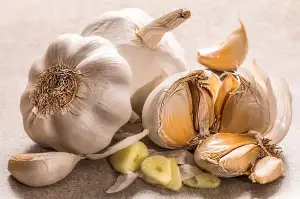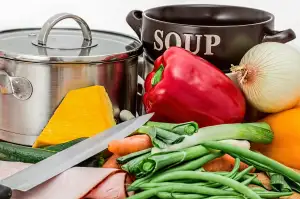Unlock the Secrets: How to Determine If Your Watermelon Is Ripe

When it comes to enjoying the refreshing taste of a watermelon, there is nothing quite like biting into a perfectly ripe one. The sweet and juicy flesh, bursting with flavor, can make any summer day feel like paradise. But how do you know if a watermelon is truly ripe? Choosing the right watermelon is crucial to ensure you get the best eating experience possible. In this article, we will unlock the secrets to determining if your watermelon is ripe, so you can indulge in its deliciousness with every bite.
Look for a yellow spot on the watermelon's skin
When it comes to choosing a ripe watermelon, there are a few key indicators to look out for. One of the first things you should check is the presence of a yellow spot on the watermelon's skin. This spot is known as the "field spot" and indicates that the fruit has ripened on the vine. A vibrant yellow or creamy color suggests that the watermelon is ready to be enjoyed. On the other hand, if the spot is green or white, it may indicate that the fruit was picked prematurely and will not have reached its full sweetness. So next time you're at the grocery store or farmer's market, be sure to keep an eye out for that telltale yellow spot!
Check for a dull skin appearance
When it comes to choosing a ripe watermelon, appearance plays a crucial role. One important indicator of ripeness is the skin's appearance. A ripe watermelon will have a dull skin rather than a shiny one. The shine on the skin indicates that the fruit is not yet fully matured. So, when you're at the grocery store or farmer's market, look for watermelons with a matte finish. This dullness suggests that the fruit has reached its peak ripeness and is ready to be enjoyed. Remember, a dull skin appearance is just one of many factors to consider when selecting a perfectly ripe watermelon.
Examine the watermelon's weight
Examine the watermelon's weight: Another important factor to consider when determining if a watermelon is ripe is its weight. A ripe watermelon will feel heavy for its size. This is because as a watermelon ripens, it accumulates more water content, making it denser and heavier. When you pick up a watermelon, compare its weight to other similar-sized ones. If it feels light or too heavy, it may not be fully ripe. So make sure to choose a watermelon that has a good weight to ensure that you are getting one that is sweet and juicy inside.
Tap the watermelon and listen for a deep, hollow sound
When it comes to choosing a ripe watermelon, tapping can be a useful technique. Gently tap the watermelon with your knuckles and listen for a deep, hollow sound. If the sound is dull or flat, it may indicate that the watermelon is not fully ripe. A ripe watermelon will produce a resonant and deep sound, indicating that it is juicy and ready to be enjoyed. So, don't forget to give your potential watermelon a little tap before making your final decision.
Assess the firmness of the watermelon
Assessing the firmness of a watermelon is another important factor in determining its ripeness. Gently press your palm against the skin of the watermelon. A ripe watermelon should feel firm but not too hard. If it feels too soft or mushy, it may be overripe or even spoiled. On the other hand, if it feels extremely hard, it might not be fully ripe yet. The ideal watermelon should have a slight give when you apply pressure, indicating that it is perfectly ripe and ready to be enjoyed. Remember, finding the right balance of firmness is key to unlocking the sweet and juicy flavors that lie within.
Consider the uniformity of the watermelon's shape
When determining if a watermelon is ripe, it's important to consider the uniformity of its shape. A perfectly ripe watermelon will have a symmetrical and consistent shape. Look for any irregularities or bumps on the surface, as this could indicate an uneven ripening process. Additionally, check for any soft spots or indentations, as these may be signs of overripe or spoiled fruit. By choosing a watermelon with a uniform shape, you can ensure that the fruit has ripened evenly and will provide the best taste and texture when enjoyed.
Conclusion: Enjoying the sweet and juicy taste of a perfectly ripe watermelon is truly a delight. By following these simple tips, you can unlock the secrets to choosing the best watermelon every time. The yellow spot, dull skin appearance, weight, hollow sound when tapped, firmness, and uniform shape are all indicators of ripeness. So next time you're at the grocery store or farmer's market, use these techniques to ensure that you bring home a watermelon that is bursting with flavor. Whether it's for a refreshing summer salad or a delicious snack on its own, a ripe watermelon will always satisfy your cravings and leave you wanting more. So go ahead and indulge in nature's sweet gift – the perfect watermelon!
Published: 17. 11. 2023
Category: Food



